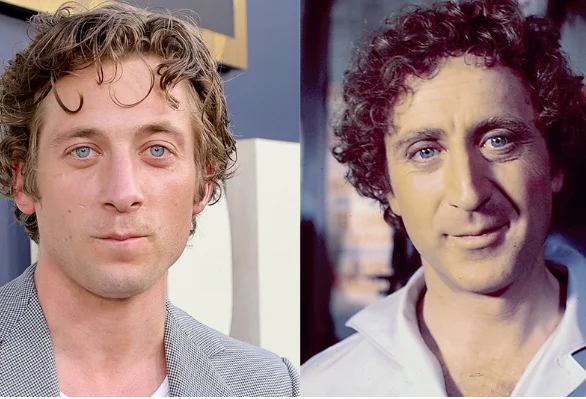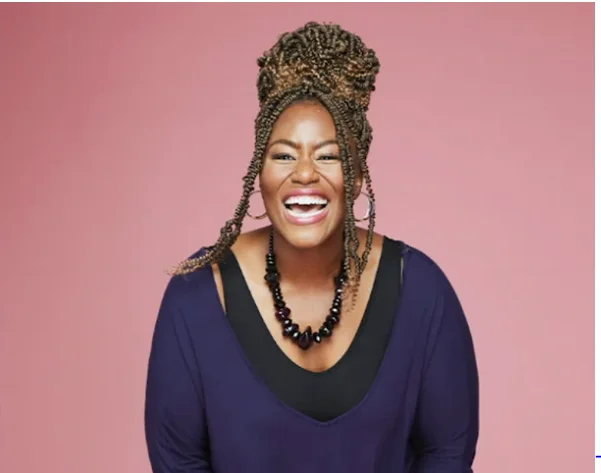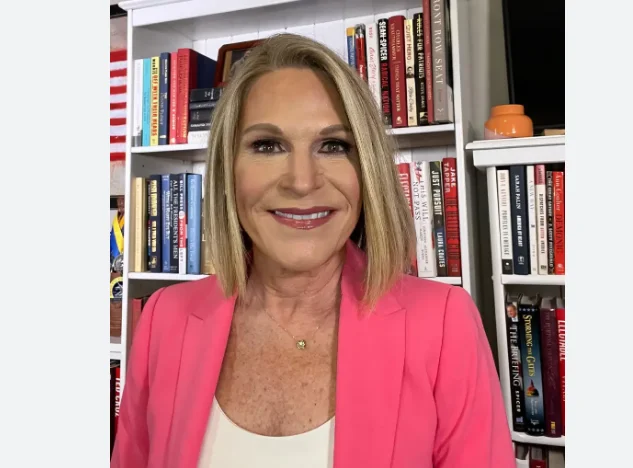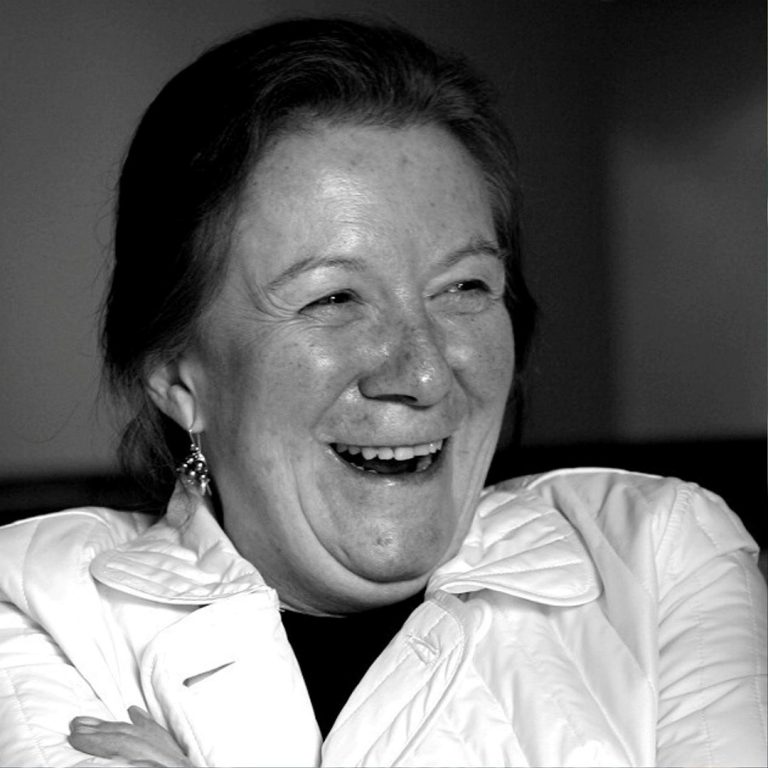Facts About Death 20 Strange and Strong Facts
Introduction to the topic of death and its taboo nature
Death is a topic that sends shivers down our spines, yet it holds an inexplicable fascination for us. It’s something we all ponder at some point in our lives, even if it makes us uncomfortable. But have you ever wondered about the strange and strong facts surrounding death? Prepare to be amazed as we delve into the intriguing world of mortality, uncovering mind-boggling statistics, bizarre rituals, and spine-chilling legends. From the oldest person who ever lived to the mysteries of decomposition and beyond, join us on this captivating journey into the realm of death! So sit back, relax (if you can), and let’s explore some shocking revelations about what lies beyond this mortal coil.
Strange Facts about Death:
Strange Facts about Death:
1. The world’s oldest living person and the age of 122: Jeanne Calment holds the record for being the oldest person to have ever lived, reaching a remarkable age of 122 years and 164 days. Her longevity has fascinated scientists and sparked debates on the limits of human aging.
2. The longest recorded time without sleep: Randy Gardner set a Guinness World Record by staying awake for an astounding 11 consecutive days in 1964. This feat highlighted both the incredible resilience of the human body and the importance of sleep for our overall well-being.
3. The world’s deadliest job: Surprisingly, one might assume that professions such as firefighters or police officers would top this list, but statistically speaking, fishing remains one of the most dangerous occupations worldwide due to accidents at sea.
These strange facts about death remind us that life is full of peculiarities and unexpected twists. They also shed light on different aspects related to mortality, from extreme longevity to unimaginable feats accomplished by individuals pushing their physical boundaries.
The world’s oldest living person and the age of 122
Have you ever wondered what it would be like to live for over a century? Well, there are some remarkable individuals who have managed to defy the odds and reach an astonishingly old age. One such person is Jeanne Calment, who holds the record for being the world’s oldest living person at the age of 122!
Jeanne was born in France in 1875 and lived through two World Wars, witnessing firsthand some of the most significant events in history. She attributed her longevity to a healthy lifestyle that included daily exercise and a diet rich in olive oil.
It’s truly mind-boggling to think about all the changes she must have seen during her lifetime – from horse-drawn carriages to space exploration! Jeanne’s remarkable story reminds us that age is just a number and that it’s never too late to make positive choices for our health.
So next time you start feeling overwhelmed by life or worried about getting older, remember Jeanne Calment and her incredible journey. Age is not something to fear but rather an opportunity to embrace all that life has to offer.
The longest recorded time without sleep
The human body is an incredible machine, capable of withstanding a multitude of challenges. But when it comes to sleep deprivation, there are limits to what we can endure. It’s no surprise that lack of sleep can have detrimental effects on our physical and mental well-being.
But did you know that the longest recorded time without sleep is a mind-boggling 11 days? Yes, you read that right! Randy Gardner holds this dubious record, having stayed awake for a staggering 264 hours in 1964 as part of a science fair experiment.
During his period of wakefulness, Gardner experienced hallucinations, mood swings, and difficulty concentrating. These symptoms highlight just how crucial sleep is for our bodies to function properly.
Sleep deprivation can have serious consequences on our health and cognitive abilities. It impairs memory formation, weakens the immune system, increases the risk of accidents and injuries, and contributes to various mental health disorders.
While most people wouldn’t voluntarily subject themselves to such extreme sleep deprivation experiments like Randy Gardner did, it serves as a stark reminder of the importance of getting sufficient rest for our overall well-being. So next time you find yourself burning the midnight oil or sacrificing sleep for other commitments remember these facts about the longest recorded time without slumber!
The world’s deadliest job
The world can be a dangerous place, and some jobs carry more risk than others. When it comes to the deadliest job in the world, there are a few contenders that come to mind. One of them is logging, which involves working with heavy machinery and often in remote areas where help may not be readily available.
Another incredibly dangerous profession is commercial fishing. Fishermen face unpredictable weather conditions, long hours on the water, and physically demanding work that puts their lives at risk every day.
But perhaps one of the most surprising entries on this list is being a pilot or flight engineer. While flying may seem glamorous and exciting, it carries inherent risks due to human error, mechanical failures, or unforeseen circumstances.
Determining the world’s deadliest job depends on various factors such as accident rates and fatalities per industry. It serves as a reminder of how perilous certain occupations can be and highlights the bravery of those who choose these paths despite knowing the risks involved.
Strong Facts about Death:
Death is an inevitable part of life, and understanding the leading causes can shed light on our mortality. According to the World Health Organization (WHO), the top three causes of death worldwide are cardiovascular diseases, cancer, and respiratory infections. These conditions claim millions of lives each year, highlighting the importance of preventive measures and access to healthcare.
The impact of COVID-19 on mortality rates
The COVID-19 pandemic has caused a significant increase in global mortality rates. As of September 2021, the virus has claimed over 4.6 million lives worldwide. The impact is not just limited to those who have died from the virus itself, but also on deaths indirectly caused by disruptions to healthcare systems and access to treatment for other conditions.
Death rates vary greatly across countries and regions, with factors such as access to healthcare, sanitation, and lifestyle choices playing a significant role. For example, high-income countries tend to have lower mortality rates due to better healthcare infrastructure and resources. On the other hand, low-income countries may have higher mortality rates due to limited access to healthcare and higher prevalence of infectious diseases.
In high-income countries, the leading causes of death are different from those in low- and middle-income countries. In addition to cardiovascular diseases, cancer, and respiratory infections, these countries also see high mortality rates from noncommunicable diseases such as diabetes and Alzheimer’s disease. Additionally, accidents and injuries are a leading cause of death in these nations.
No discussion about death would be complete without mentioning the global pandemic that has plagued us in recent times. COVID-19 has had a devastating impact on mortality rates worldwide. As countries struggled with overwhelmed healthcare systems and limited resources, many lives were lost to this novel virus. It serves as a stark reminder that even in modern times, infectious diseases can still pose significant threats.
While these strong facts highlight grim realities surrounding death, they also serve as reminders to cherish life while we have it. Understanding leading causes allows us to make informed choices for better health outcomes while being aware of global challenges like pandemics encourages us to prioritize public health initiatives.
– Leading causes of death globally
Leading causes of death globally are a somber reminder of our mortality. It’s fascinating yet sobering to learn about the ailments and conditions that claim the most lives across the world.
Cardiovascular diseases, such as heart attacks and strokes, top the list as one of the leading causes of death worldwide. These conditions often stem from a combination of factors including poor diet, sedentary lifestyles, smoking, and genetic predisposition.
Cancer is another major contributor to global mortality rates. With its myriad forms affecting various organs and body systems, cancer poses a significant threat to human life. Advances in medical research have led to improvements in detection and treatment options but there is still much work to be done in combating this devastating disease.
Respiratory illnesses like chronic obstructive pulmonary disease (COPD) and pneumonia also contribute significantly to global mortality rates. Factors such as air pollution, smoking, occupational hazards, and inadequate access to healthcare play crucial roles in these deaths.
Infectious diseases like HIV/AIDS, tuberculosis (TB), malaria, and influenza continue to wreak havoc on populations around the world. Despite advancements in prevention methods and treatments for some infectious diseases, they remain persistent threats particularly in regions with limited resources or infrastructure.
Accidents—ranging from road accidents to falls—are responsible for a significant number of deaths globally each year. Prevention efforts focusing on safety measures along with education can help reduce these tragic incidents.
While understanding these leading causes of death provides valuable insight into public health priorities globally may not bring comfort or solace when contemplating our own mortality or dealing with grief over losing loved ones. However, it does highlight the importance of taking care of our health and advocating for improved healthcare resources and policies to save lives.
The impact of COVID-19 on mortality rates
The COVID-19 pandemic has undoubtedly had a significant impact on mortality rates across the globe. As this highly contagious virus spread rapidly, many lives were tragically lost. The sheer scale of its effect is staggering.
One of the most striking aspects of COVID-19 is its ability to affect people from all walks of life. From young to old, no one was immune to its devastating consequences. This virus reminded us just how fragile and precious life truly is.
The healthcare systems around the world have been put under immense strain as they battled to save lives and provide adequate care for those affected by the virus. Medical professionals worked tirelessly, risking their own well-being to help others in need.
In addition, COVID-19 highlighted existing disparities in healthcare access and resources, impacting mortality rates disproportionately among marginalized communities. It exposed systemic inequalities that need urgent attention and action.
As vaccines became available, there was hope for a decline in mortality rates. However, new variants continue to emerge, creating ongoing challenges in our fight against the virus.
COVID-19 serves as a stark reminder that death can come unexpectedly and indiscriminately. It emphasizes the importance of taking care of ourselves and supporting one another during these uncertain times.
While we navigate this pandemic together, it’s crucial that we remain vigilant and prioritize public health measures such as wearing masks, practicing social distancing, and getting vaccinated when eligible – not only for ourselves but for the collective well-being of society.
We must never forget the lives lost due to COVID-19 or underestimate its impact on mortality rates worldwide. Let us honor their memory by striving towards a future where health equity is prioritized and pandemics are better managed.
Death rituals and traditions around the world
Death is a universal experience, yet cultures around the world have unique rituals and traditions when it comes to bidding farewell to their loved ones. From elaborate ceremonies to simple customs, death rituals provide comfort and closure for grieving families.
In Mexico, the Day of the Dead is a vibrant celebration where families gather at cemeteries, adorning graves with colorful flowers and offering food and drinks to the departed souls. It’s believed that during this time, the spirits of loved ones return to earth for a brief visit.
In Tibet, sky burials are practiced as an act of compassion towards nature. The deceased’s body is dismembered and left on mountaintops or exposed areas for vultures to consume. This ritual symbolizes the cycle of life and death while providing sustenance for birds.
On the Indonesian island of Sulawesi, Torajan people hold elaborate funeral ceremonies that can last several days or even weeks. During this time, they dance alongside wooden effigies called Tau Tau representing their ancestors’ spirits.
In Ghana, fantasy coffins have become popular in recent years. These custom-made coffins are designed in various shapes such as animals or objects reflecting the deceased’s profession or passion in life.
While these death rituals may seem strange or unfamiliar from an outsider’s perspective, they play a crucial role in honoring and remembering those who have passed away within each culture’s unique belief system.
Dealing with grief and loss
Dealing with the unimaginable pain of grief and loss is a deeply personal journey, one that no amount of words can fully capture or alleviate. Each person’s experience is unique, and there are no right or wrong ways to navigate through this difficult terrain.
One common thread among those who have experienced loss is the need for support. Whether it be from friends, family, or professional counselors, having someone to lean on during these dark times can make all the difference. It’s important to remember that grieving is not a linear process – it ebbs and flows like waves crashing against the shore.
Finding healthy coping mechanisms can also aid in healing. Engaging in activities that bring solace and comfort can provide temporary reprieve from overwhelming emotions. This could include journaling, painting, practicing mindfulness or meditation, or simply spending time in nature.
Self-care should also be a priority during this period of mourning. Taking care of your physical and mental well-being becomes crucial when navigating such turbulent waters. Making sure you eat nourishing meals, get enough restful sleep, exercise regularly (if possible), and seeking therapy if needed are all vital steps towards healing.
Give yourself permission to grieve at your own pace without judgment or pressure from others. There is no timeline for grief; it takes as long as it takes for wounds to slowly mend into scars.
Remember that you are not alone in your pain – countless others have felt similar depths of sorrow before you. Seek out support networks both online and offline where you can connect with individuals who understand firsthand what you’re going through.
In time, though never forgotten nor completely healed from our losses entirely new chapters will begin writing themselves upon our hearts allowing us room anew space anew memories anew love anew joy beyond compare!
Controversial ways people have dealt
When it comes to death, everyone copes in their own unique way. Some find solace in traditional rituals and grief support groups, while others seek out more unconventional methods of dealing with their loss. These controversial ways of coping can sometimes spark heated debates and divide opinions.
One such controversial method is cryonics, the practice of freezing a deceased person’s body or brain in hopes of reviving them in the future when medical advancements allow. Advocates argue that this offers a chance for eternal life, while skeptics question the ethics and feasibility of such a process.
Another controversial approach is memorial diamonds – transforming cremated remains into gemstones that can be worn as jewelry. While some find comfort in keeping their loved ones close through this unique form of remembrance, others view it as macabre or disrespectful.
In recent years, online platforms have emerged where people can interact with “digital replicas” of deceased individuals based on information gathered from social media profiles and other digital footprints. This raises ethical questions about privacy rights and emotional manipulation.
Some individuals choose to turn to psychedelic substances like psilocybin or ayahuasca as part of their grieving process. Proponents believe these substances can facilitate healing and provide spiritual insights, but critics caution against potential risks and emphasize the importance of responsible usage.
It’s important to remember that these controversial approaches may not be suitable for everyone and should always be approached with careful consideration. Each person has their own journey through grief, and what works for one may not work for another.
Let us explore these unusual ways people cope with death without judgment or prejudice but rather an open mind towards understanding different perspectives on how people navigate life’s most challenging moments.
Introduction to Death and Its Mysteries
Death, the ultimate mystery that has captivated humanity since the dawn of time. It is a topic shrouded in fear, reverence, and curiosity. We are all aware of its inevitability, yet it remains elusive and unknown. What happens when we take our last breath? Where do we go? These questions have puzzled philosophers, theologians, and scientists alike.
Death is not just an end; it is also a beginning. It marks the transition from one state of being to another. Some believe in an afterlife an eternal realm where souls continue their journey. Others see death as the final cessation of consciousness a void from which there is no return.
Throughout history, cultures across the globe have developed unique beliefs and rituals surrounding death. From elaborate funeral ceremonies to intricate burial customs, each society has sought to honor and commemorate those who have passed on.
But what about the physical aspects of death? The decomposition process that transforms our mortal bodies into dust? It’s a fascinating subject for forensic experts and scientists studying human anatomy.
While death may be scary and often leads us down dark paths of overthinking, it can also serve as a reminder to cherish life while we still can. Instead of dwelling on our mortality or fearing what lies beyond, let us embrace each moment with gratitude and live fully in the present.
So next time you find yourself contemplating death’s mysteries or feeling overwhelmed by thoughts of mortality take a deep breath! Remind yourself that life is meant to be lived now not consumed by worries about what will happen when it inevitably ends.
Remember: every second counts, so make them count!
The Fascinating Truth About the Human Body After Death
When it comes to death, our bodies undergo a series of intriguing changes that are both fascinating and sometimes eerie. Once life leaves us, our bodies start to go through a process known as decomposition.
Within minutes of death, the body’s cells begin to break down. This is due to a lack of oxygen and nutrients reaching the tissues. The process starts with autolysis, where enzymes in our cells start digesting themselves.
As time goes on, bacteria present in the body begin their work by breaking down soft tissues. This leads to bloating and discoloration as gases build up within the body. It’s not uncommon for bodily fluids to leak out during this stage.
After several days or weeks, depending on various factors such as temperature and environment, insects and scavengers may join in on the decomposition party. They feast on what remains of our flesh.
Eventually, only bones will remain. Through natural processes like weathering and erosion over many years, these skeletal remains can be all that’s left behind as evidence of once-living beings.
It’s important to remember that while these facts about post-mortem changes might seem macabre or unsettling, they are simply part of nature’s cycle. Understanding how our bodies transform after death can help demystify some fears surrounding mortality itself.
So next time you ponder what happens when we die, remember that even though it may seem scary at first glance – there is beauty in every stage of life (and beyond).
Cultural Beliefs and Rituals Surrounding Death
Death is not just a universal experience; it is also deeply intertwined with cultural beliefs and rituals. From ancient civilizations to modern societies, different cultures have developed unique ways of understanding and honoring the deceased.
In many Eastern cultures, such as China and Japan, ancestor worship plays a significant role in their belief systems. They believe that the spirits of their ancestors continue to guide and protect them even after death. This belief is often reflected in elaborate ceremonies where offerings are made to honor the departed souls.
On the other hand, some African tribes celebrate death as a transition into another realm rather than an end. The Dagara people of Burkina Faso actually view death as an opportunity for spiritual growth. They hold intricate funeral rites that involve dancing, singing, and storytelling to commemorate the life of the deceased.
In Mexico, Dia de los Muertos or Day of the Dead is a vibrant celebration that honors deceased loved ones. Families create beautiful altars adorned with photos, food offerings, marigolds (the flower of death), and candles to welcome back their departed souls for one night each year.
The Hindu religion has its own set of rituals surrounding death known as Antyesti or cremation ceremony. Hindus believe in reincarnation and see death as merely a transition from one life to another. During Antyesti, family members gather around the body before cremation takes place while prayers are chanted by priests.
These examples barely scratch the surface when exploring cultural beliefs about death worldwide. Each culture’s customs reflect their unique perspectives on mortality – ranging from solemn mourning practices to joyous celebrations commemorating lives lived.
Unusual Causes of Death Throughout History
Throughout history, there have been some truly bizarre and unexpected causes of death. From the strange to the downright unbelievable, these cases remind us just how unpredictable life can be.
In ancient Rome, it was not uncommon for individuals to meet their demise due to lead poisoning. This toxic metal was used in everything from cookware to cosmetics, leading to long-term exposure and fatal consequences.
Another peculiar cause of death dates back to the 16th century when a Swedish king allegedly died from consuming too much alcohol during a feast. Known as “drinking oneself to death,” this serves as a stark reminder of the dangers excessive drinking can pose.
Moving on to more recent times, we cannot forget about one of history’s strangest accidents – the case of Isadora Duncan. The renowned dancer met her tragic end when her flowing scarf became entangled in the wheel spokes of an open-top car she was riding in, resulting in strangulation.
And who could forget about poor King Henry I? It is believed that his love for lampreys led him to consume them excessively at a banquet which ultimately caused his untimely demise due to food poisoning.
These unusual causes highlight just how fragile human life can be and serve as reminders that sometimes it’s the most unexpected things that can bring us face-to-face with our mortality. So next time you ponder over life’s mysteries, remember these unique tales because truth is often stranger than fiction!
Famous Last Words: Quotes from Historical Figures on Death
We often look to historical figures for wisdom and inspiration, but what did they have to say about death? Their final words give us a glimpse into their thoughts and beliefs as they faced the end of their lives.
One such figure is Benjamin Franklin, who famously said, “A dying man can do nothing easy.” These poignant words capture the struggle and vulnerability that accompanies our transition from life to death. It reminds us that even great minds like Franklin’s are not immune to the fear and uncertainty that death brings.
Another notable historical figure is Albert Einstein, who expressed his thoughts on mortality by saying, “I want to go when I want. It is tasteless to prolong life artificially.” This sentiment reflects Einstein’s desire for a natural end rather than being kept alive through medical interventions. It raises questions about human agency in deciding when it’s time to let go.
On a more poetic note, Emily Dickinson left behind the hauntingly beautiful line, “Called back – just then!” Her enigmatic last words convey a sense of mystery and anticipation as she ventured into the unknown realms beyond life. They remind us of the transient nature of existence and leave room for contemplation on what lies beyond our mortal realm.
These snippets of parting wisdom from historical figures offer glimpses into their innermost thoughts during their final moments. While we may never fully understand or conquer our fears surrounding death, exploring these last words can provide comfort or provoke further introspection as we navigate our own mortality.
The Science of Near-Death Experiences
Near-death experiences (NDEs) have fascinated scientists and researchers for decades. These extraordinary encounters often involve a person feeling as though they have left their physical body and entered a realm beyond our earthly existence. While skeptics dismiss NDEs as mere hallucinations or tricks of the mind, there is growing scientific evidence suggesting otherwise.
Researchers have found that during NDEs, certain brain regions associated with self-awareness and perception become hyperactive. This contradicts the notion that these experiences are simply products of a dying brain’s malfunctioning processes. Additionally, many individuals report similar themes in their near-death accounts, such as encountering deceased loved ones or experiencing a sense of peace and unconditional love.
Some scientists propose that NDEs could be explained by various physiological and psychological factors. For example, oxygen deprivation to the brain may trigger hallucinatory visions or feelings of detachment from the body. Others suggest that profound emotional states can induce altered states of consciousness, leading to vivid NDEs.
While we may not fully understand the science behind these intriguing phenomena just yet, it is clear that near-death experiences continue to challenge our understanding of consciousness and what lies beyond death’s threshold. The exploration into this field holds immense potential for unraveling some of life’s greatest mysteries.
So next time you hear someone recount their near-death experience, pause for a moment and consider the profound implications it carries. After all, perhaps in studying these incredible stories we will inch closer to shedding light on one fundamental question: what awaits us when we take our final breath?
Curious Funeral Customs Around the World
Funerals are a time for mourning and paying respects to the deceased. But did you know that funeral customs can vary greatly across different cultures? From elaborate ceremonies to unique burial practices, here are some fascinating funeral traditions from around the world.
In Ghana, funerals are seen as a celebration of life rather than a somber occasion. Families often hold extravagant events that can last for several days. These gatherings involve music, dancing, and even professional mourners who wail loudly to express grief.
In Tibet, sky burials are practiced by adherents of Vajrayana Buddhism. Instead of burying or cremating bodies, they believe in offering them to vultures as an act of generosity. The belief is that this practice allows the soul to be released from its earthly vessel.
On the island of Madagascar, famadihana is a unique tradition where families exhume the remains of their ancestors every few years for a joyous ceremony. During this ritual, known as “turning bones,” families dance with wrapped corpses while live music plays in honor of their loved ones’ spirits.
In Japan’s Shinto religion, it is customary for family members to clean and care for their deceased loved ones’ graves on specific days throughout the year. This act symbolizes respect and remembrance while maintaining a connection with ancestors.
In New Orleans, Louisiana (USA), jazz funerals have become iconic cultural events. Combining mourning with music and processionals through city streets, these vibrant celebrations pay tribute to departed souls in true Crescent City style.
From colorful processions in Mexico’s Day of the Dead celebrations to solemn Buddhist cremations in Thailand – funeral customs provide us with insight into how different cultures cope with loss and honor those who have passed away.
Bizarre Facts About Decomposition and Funerals
When it comes to death, the process of decomposition is both fascinating and eerie. Did you know that after death, our bodies undergo a series of changes that eventually return us to the earth? It’s strange but true.
Did you know that during decomposition, our bodies can emit a postmortem glow known as “corpse candles”? This phenomenon occurs due to chemical reactions in the decaying tissues. Imagine stumbling upon this eerie sight in the darkness!
Another bizarre fact is that embalming isn’t always necessary for preserving a body. In certain cultures, such as Tibetan sky burials or Swedish forest burials, natural processes take precedence over embalming techniques. These unique funeral rituals allow nature to reclaim what was once alive.
Speaking of unconventional funerals, have you heard about “promession”? It’s an environmentally friendly alternative where your body is freeze-dried using liquid nitrogen and then shattered into tiny particles! These particles are then placed in biodegradable containers and buried.
But wait, there’s more! Ever wondered how long it takes for a body to completely decompose? Well, under optimal conditions (such as warm temperatures), it can happen surprisingly quickly – within just weeks! However, factors like burial depth and presence of oxygen can extend this timeline significantly.
So next time you find yourself contemplating death or attending a funeral service with somber thoughts swirling through your mind, remember these bizarre facts about decomposition and funerals. They may not provide comfort per se but definitely offer an intriguing glimpse into the mysteries surrounding life’s inevitable end.
Creepy Legends and Myths about Death
As we delve into the realm of death, it’s impossible not to encounter an array of creepy legends and myths that have been passed down through generations. These tales add a chilling layer to our understanding of mortality, fueling our fascination with the afterlife. Let’s explore some spine-tingling stories:
1. The Grim Reaper: This iconic figure is often depicted as a skeletal figure cloaked in black robes, wielding a scythe. According to folklore, the Grim Reaper appears before someone’s impending demise, serving as a harbinger of death.
2. La Llorona: Originating from Latin American folklore, La Llorona is known as “The Weeping Woman.” The legend tells the story of a woman who drowned her children in a fit of rage and now wanders riversides at night searching for them while wailing inconsolably.
3. Bloody Mary: A popular urban legend among brave daredevils during sleepovers! If you stand before a mirror in complete darkness and chant “Bloody Mary” three times, this vengeful spirit is said to appear in the reflection.
4. The Headless Horseman: Made famous by Washington Irving’s classic tale “The Legend of Sleepy Hollow,” this specter rides through dark forests at night on his black horse with nothing but empty space where his head should be.
5. The Curse of King Tutankhamun: Ancient Egyptian history carries its fair share of ominous legends surrounding pharaohs’ tombs and curses placed upon those who disturb their resting places. One such curse was believed to haunt anyone involved in uncovering Tutankhamun’s tomb.
These eerie legends remind us that death holds an enduring grip on human imagination and culture worldwide. They captivate us with their macabre charm while simultaneously instilling fear within our hearts.
In conclusion (without explicitly saying so), exploring facts, rituals, and beliefs about death can bring us face-to-face with our own mortality and remind us to cherish the time we have on this earth.































